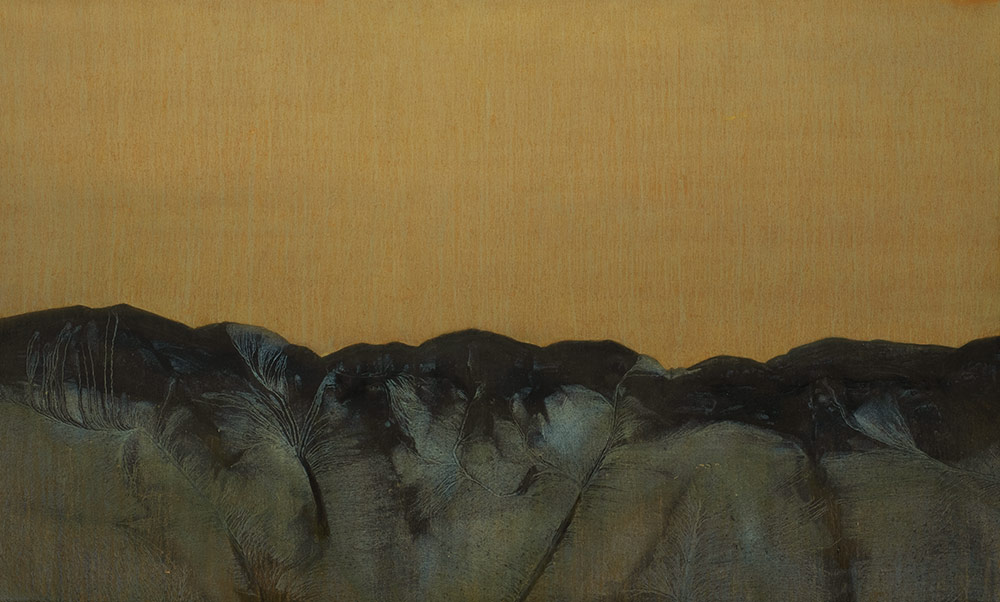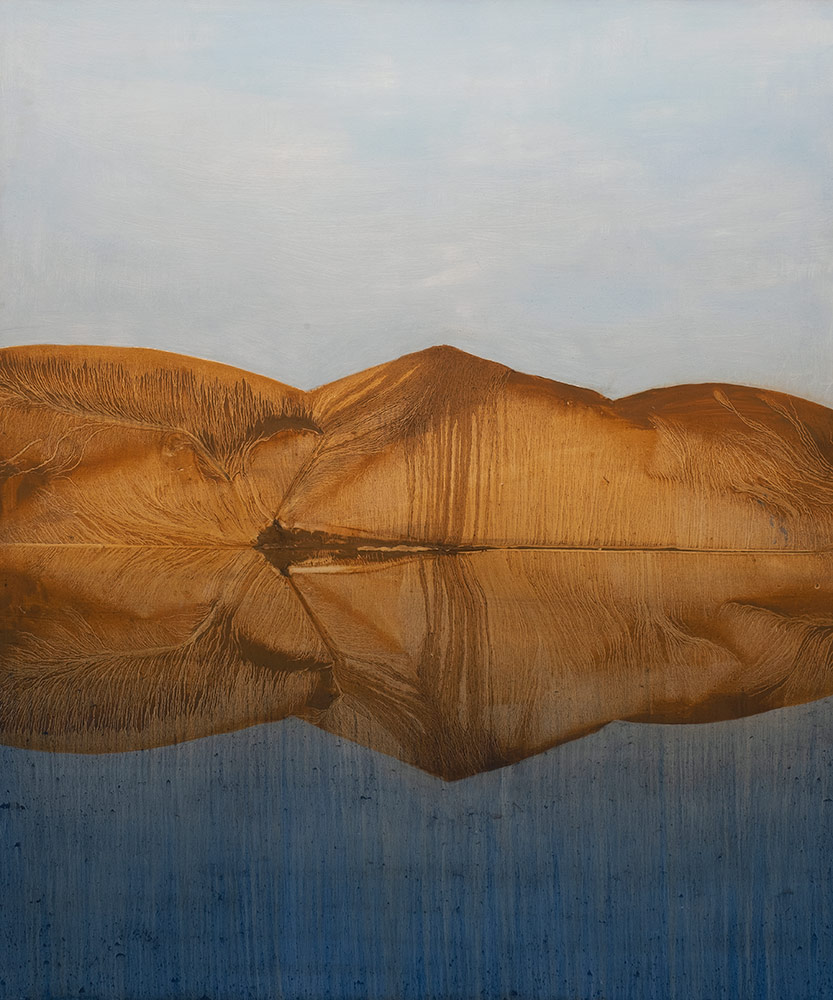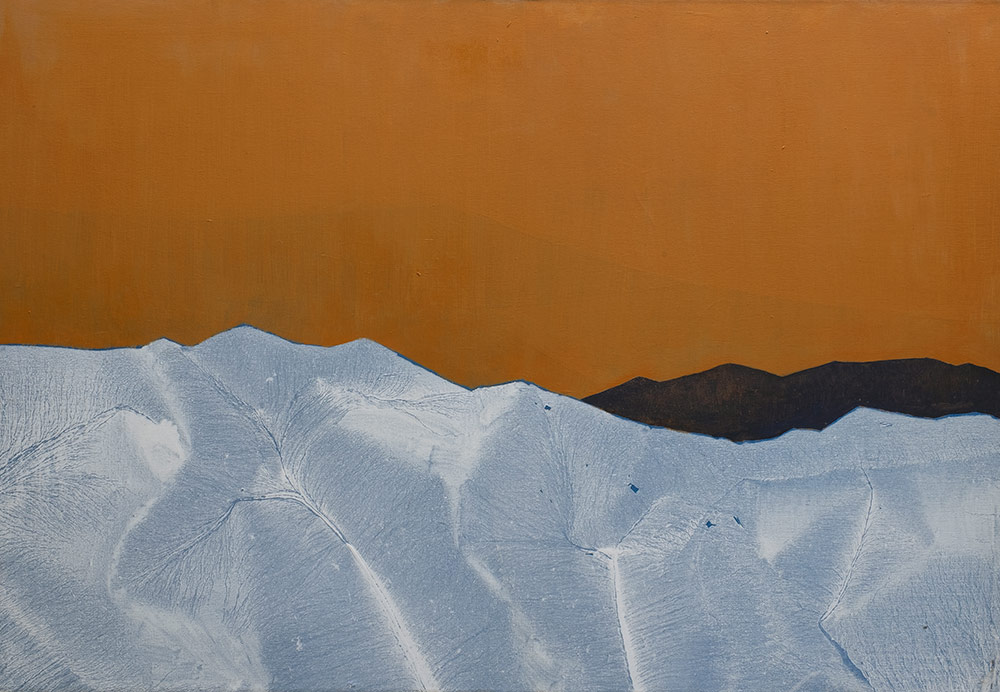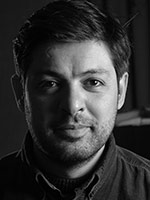Armen Hakobjanyan

O-Panorama, 2021

O-Panorama, 2020

O-Panorama, 2020

Biography:
Born in 1989, Sisian, Armenia
1996-2003 Art School after Zakar Khachatryan, Sisian, Armenia
2005-2009 Yerevan State University of Architecture and Construction, Bachelor in Architecture, Armenia
2011-2013 Yerevan State University of Architecture and Construction, Master in Architecture and Design, Armenia
Work Experience:
2006 Freelance architect, designer
2013-2019 Monument Restoration Center
2014-2015 “QCA” Architectural Studio
2014-2016 NAS of RA, Institute of Archaeology and Ethnography
2015-2016 “Hrachya Vardanyan” Architectural Studio
2016-2019 “2ab” Architectural Studio
2016-2020 “Service For The Protection Of Historical Environment and Cultural Museum-reservations” State Non-commercial Organization
Solo Exhibitions:
2021 Border_line, Latitude Art Space, Yerevan, Armenia
Group Exhibitions:
2023 Selections II, Galeri 77, Istanbul, Turkey
2023 CI Bloom, with Galeri 77, Istanbul, Turkey
2023 Selections I, Galeri 77, Istanbul, Turkey
2022 Contemporary Istanbul 17th Edition, with Galeri 77, Istanbul, Turkey
2022 Bloom, Galeri 77, Istanbul, Turkey
2022 CI Bloom, with Galeri 77, Istanbul, Turkey
2021-2022 TOMORROW, Cafesjian Center for the Arts, Yerevan, Armenia
Armen Hakobjanyan is a contemporary painter born in 1989 in Sisian (Syunik Province in southern Armenia). During his teenagerhood, the artist has studied in the Sisian School of Fine Arts named after Zakar Khachatryan. Here he studied under the supervision of Ashot Avagyan, a well-known Armenian painter, who is inspired by ancient megalithic structures and ancient petroglyphs. This is where Hakobjanyan found interest in the functional abilities of the materials. Later, he studied at Yerevan State University of Architecture and Construction, receiving a master’s degree in architecture. This background has developed his specific approach towards painting. Hakobjanyan plays with his role as an artist switching it from a “doer” to a “definer”, questioning the presence and meaning of painting in the contemporary world. Inspired by nostalgic memories he is trying to create a bridge between our memories and reality. “Love”, “Equality” and “Quietness” are three words, which according to Hakobjanyan, best describe his artworks.
Artist Statement:
“I noticed that in the represented series of works I turned from an “author-doer” to an “observer-recorder”. Perhaps by using the most experienced method of unblocking the cognitive I have turned to the technical abilities of the material, as a direct way of disclosing the form. I followed the hints of the materials, in this case the canvases and oil paint, creating possibilities for those to expose and gush themselves freely in the created determined situation.”
Armen Hakobjanyan
Reviews:
Armen Hakobjanyan’s series entitled “0-Panorama” definitely represent paintings, an expression that is rarely used in the context of contemporary art, as on the way of redefining it, artists refuse being limited within the frames of the canvas. Earlier, at the beginning of the 20th century, oil paint became its own content, speaking for itself and redefining what the art is, simultaneously freeing the image from its plot content. It may seem that this dialogue is an overtalk, but this artist returning to the oil painting, again raises questions of the meaning and essence of art.
“What is art” and “what is it about?”
When viewing these large canvases from afar one needs no description to identify that those are landscapes, perhaps not typical Armenian ones, but still monumental mountains. Only after taking a closer look, the monumental mountains turn out to be just surfaces. Leaving the viewer with no plot, narrative, or even emotional classic interpretation, these surfaces become textures, which are a dialogue between canvas and oil paint, the artist`s two important materials.
Artist works on a horizontally placed canvas, letting the paint flow creating its own content. The surfaces of canvases become platforms where you can once again engage yourself in a broad conversation on the perception of the artwork and on the role of materials in it. Does the paint speak or it just creates its own flow?
Sona Hovhannisyan, 2021
Curator
***
What you see exists on its own. But is it still there, when you don’t look at it? Are the things existing out of your gaze, or they start existing once appearing in your view which formulates and defines them. Look. What you see now on the canvases and describe as “mountains” or “waters”, is just a surface. Both surfaces, the one you imagine and the one you actually see are the results of certain processes. These processes start from definitions, conditional separation of one surface from another, which the eye later sees as sky or a mountain top. All starts from the definition of the borderline. A line that divides the space into two conditional parts and gives them freedom of forming and flowing, though the freedom is previously limited by certain borders. This border is the compromise line between the artist, his desires and the materials with their functional abilities. As a result, we get surfaces, having forms, but lacking formulations. A surface that doesn’t have the need of being filled with narrative or plot. You can see mountains or sky, cold or warm, yours or mine, but you can also liberate yourself from this habit of describing everything and give yourself freedom to see what you see.
Ella Kanegarian, 2021
Curator
***
Beauty is not a category one can easily prescribe to art anymore. Armen Hakobjanyan’s landscapes seem to teether on the intangible line between the beautiful and terrifying - a Kantian experience that Armenian artists have always gravitated towards throughout modernity. I look forward to see where this young artist will go next.
Armen Hakobjanyan’s technique is based on oil thinning, which gives his landscapes a glowing luminosity and transparency. These monumental forms seem indestructible and mythically calm, yet the shimmering and flowing paint also suggest a state of impermanence and transition.
Back to the survey of recent exhibitions in Yerevan. I was quite impressed with the first solo show of emerging artist Armen Hakobjanyan who showed his stark landscapes at Latitude gallery a few months ago. Originally from Sisian, Armen’s pared down, minimalist vistas seem inspired by the harsh reliefs of his native southern region. But the landscapes are imaginary rather than concrete and they return to the question of the sublime, the power of primal elements and the overwhelming indifference of nature towards humanity. In this, Hakobjanyan continues the trajectory of Armenian landscape painting first set up by Vardges Surenyants and developed in Soviet era by Hakob Hakobyan.
Vigen Galstyan, 2021
(PhD) Art curator and historian


